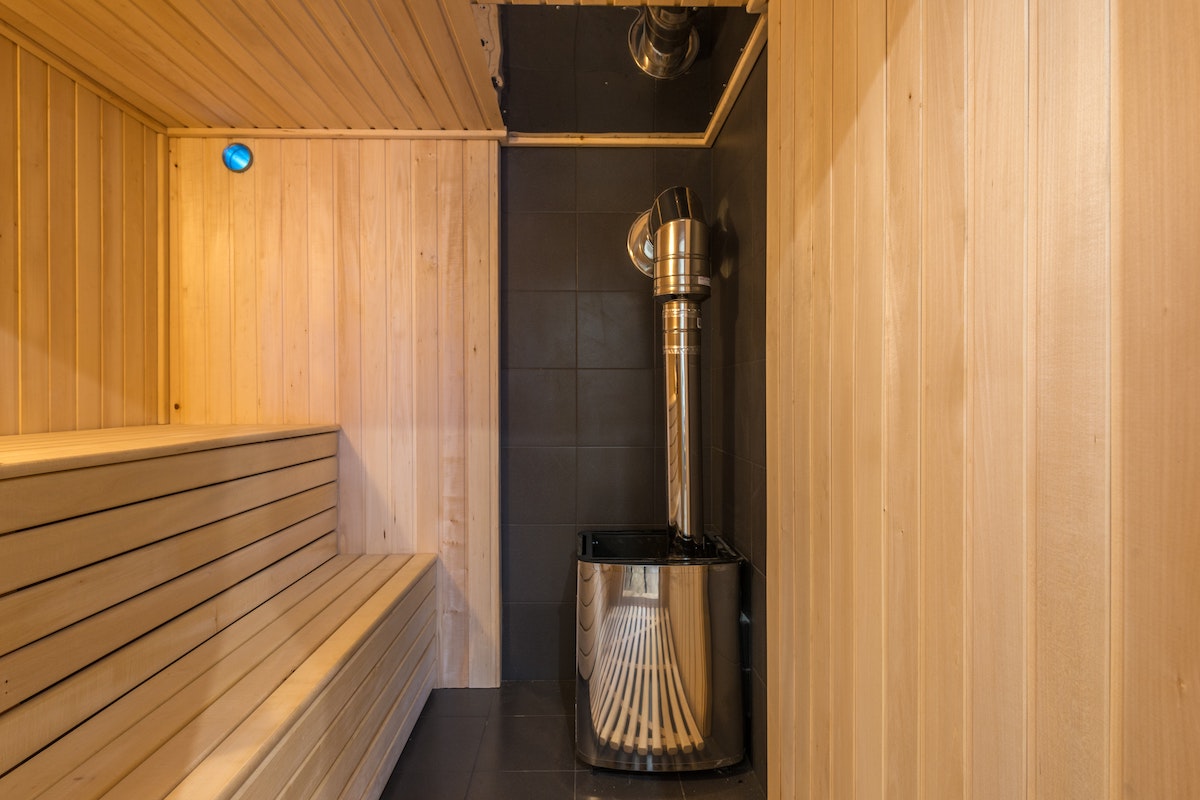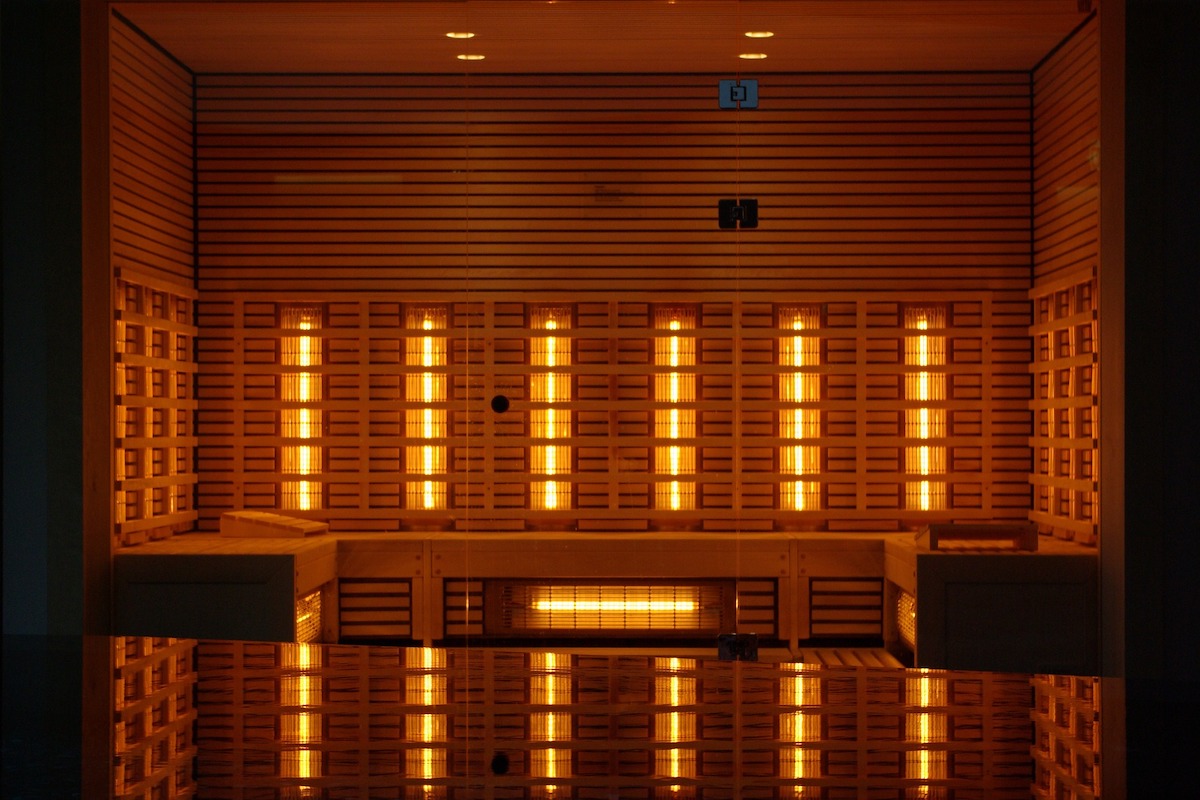The wellness space is constantly evolving. There’s no shortage of trends and buzzwords. “Detoxify” is a big one, and proponents of traditional saunas have long purported that a sweat session in one could help you release toxins.
In the latter half of the 2010s, a new trend emerged in the spa space: Infrared saunas. Makers swore that the special infrared lamps that utilize electromagnetic radiation to heat your body directly lead to a better — more detoxifying, even — experience.
Wellness claims are a dime a dozen, though. Further, the word “radiation” may make you a little nervous. What’s the deal with infrared saunas? Here’s what to know before booking an appointment.

How do infrared saunas work?
At first glance, an infrared sauna may look like a traditional sauna, though some models may look like a tent (it’s not for style points — it’s a cost-cutting design).
However, the process is the most significant difference between a traditional and an infrared sauna. A traditional sauna uses heat to warm the air. Your body gets nice and warm and sweaty as a result. On the other hand, an infrared sauna uses far infrared light, which transmits electromagnetic radiation, to cut right to the chase and heat your body. The idea is that an infrared sauna requires less heat and deeper tissue penetration, allowing the user to work up a sweat more quickly than with a traditional sauna.

How hot do infrared saunas get?
Infrared saunas operate at lower temperatures than their traditional counterparts. An infrared sauna typically reaches 120˚F and 140˚F. Traditional saunas usually hit temperatures between 150˚F and 180˚F.

What are infrared saunas good for?
Proponents of infrared saunas swear they have tons of benefits, including:
- Detoxification
- Lower blood pressure
- Treatment for congestive heart failure
- Improved sleep quality
- Relaxation
- Ache and pain relief, including in people with chronic pain
- Obesity treatment
- Anti-aging
- Better circulation
- Improvement in symptoms for people with chronic fatigue syndrome
- Reduction in cholesterol levels
- Improved mental well-being
Of course, the wellness space is filled with dubious claims. What does the science say about infrared saunas? Truthfully, not much. Infrared saunas have yet to be studied extensively.
First, let’s clear up the big one: Detoxification. Sweating has its share of benefits, including weight loss. However, you cannot sweat out toxins.
A 2009 literature found limited moderate evidence suggesting that infrared saunas could lower blood pressure and treat congestive heart failure. There was only one study on chronic pain, and the results indicated a fair amount of evidence that infrared saunas could help. There was also only one study on obesity, and the evidence supporting infrared saunas for treating the condition was also weak. The authors did not find evidence that infrared saunas could lower blood pressure.
In 2015, a small study of 10 people found that infrared saunas could help alleviate symptoms of chronic fatigue. Another one from the same year with the same sample size indicated that infrared saunas could aid recovery following strength training.
A study from 2006 noted that infrared light could reduce skin photoaging signs.
Though there might not be robust data supporting claims of medical benefits, experts do note that people experience improved mental well-being from using traditional and infrared saunas.

Are infrared saunas safe?
Generally, yes. Electromagnetic radiation is low, and exposure to it is considered safe for humans. However, some people should avoid them or at least have a conversation with their healthcare provider before jumping into an infrared sauna. People should be cautious of infrared saunas if they have:
- Low blood pressure
- Had a heart attack
- Cardiovascular disease
- Ever experienced fainting spells
Pregnant people should also avoid infrared saunas, so nix it if you’re thinking of going to an infrared sauna with a pregnant partner.
Side effects of infrared saunas may include:
- Dehydration
- Dizziness
- Nausea
- Hot flashes
Drinking plenty of water before and during your time in an infrared sauna can help reduce risks. Continue to hydrate after, even if you don’t feel thirsty. Additionally, avoid overconsuming alcohol or coffee prior to stepping into one, as both are dehydrating. People usually spend 20 minutes in an infrared sauna, but you should work your way up to that time. Start with smaller increments, like five or 10 minutes, to see how your body adapts and feels.
Infrared saunas use infrared light to heat the body directly. This process differentiates infrared saunas from traditional ones, which heat the air. The hot air then heats the body. Benefits, such as use for weight loss, lower blood pressure, and improved cholesterol, have not been studied enough for scientists to conclusively sign off on all of the purported benefits of infrared saunas. However, they do appear to improve mental well-being. That benefit alone may make it worth the shot.
Still, you’ll want to consider the pros and cons, particularly if you have certain health conditions. People prone to fainting spells or with heart disease should speak with a provider first. Drink plenty of water before and during your trip to an infrared sauna — they can be dehydrating. Look for a clean, licensed spa and read reviews before choosing one. You want it to be a stress-reducing experience, not one that induces stress.



